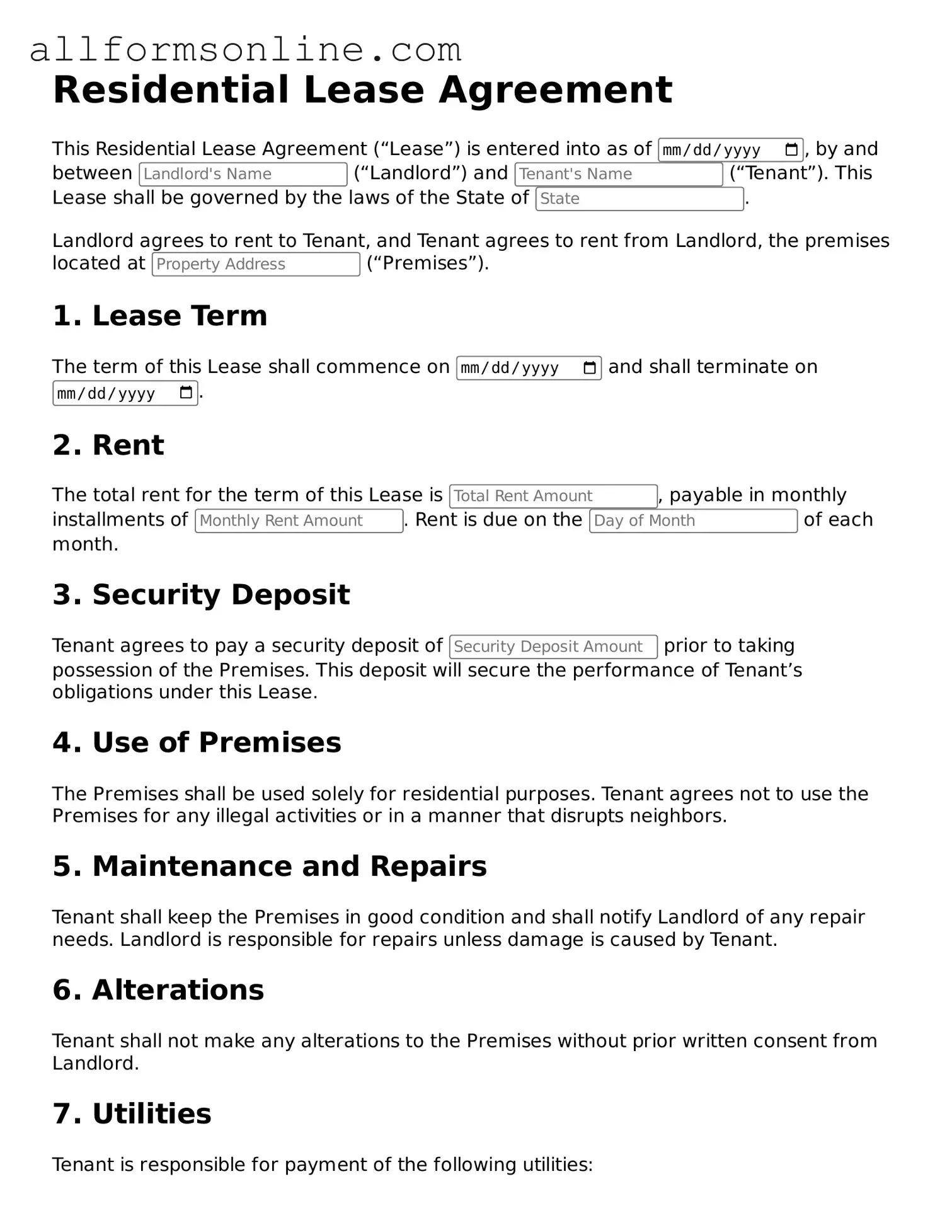What is a Lease Agreement?
A Lease Agreement is a legal document between a landlord and a tenant. It outlines the terms and conditions under which a tenant can occupy a property. This document typically includes details such as the rental amount, duration of the lease, responsibilities for maintenance, and rules regarding the use of the property. It serves to protect the rights of both parties and provides a clear understanding of their obligations.
What should be included in a Lease Agreement?
Essential components of a Lease Agreement include the names of the landlord and tenant, the property address, the lease term (start and end dates), rent amount and payment schedule, security deposit details, maintenance responsibilities, and any restrictions or rules, such as pet policies or noise regulations. Including these details helps prevent misunderstandings and disputes in the future.
How long is a typical Lease Agreement?
Lease Agreements can vary widely in length. Most residential leases last for one year, although shorter or longer terms are common. Some landlords may offer month-to-month leases, which provide flexibility but may also allow for more frequent changes in rental terms. The duration should be clearly stated in the agreement to ensure both parties are aware of their commitment.
Can a Lease Agreement be terminated early?
Yes, a Lease Agreement can be terminated early, but this typically requires mutual consent from both the landlord and tenant. Many agreements include specific terms regarding early termination, such as notice periods or penalties. If a tenant needs to leave before the lease ends, they should review these terms and communicate with the landlord to explore options.
What happens if the Lease Agreement is violated?
If either party violates the Lease Agreement, the other party may have the right to take action. Common violations include failure to pay rent or unauthorized alterations to the property. Depending on the severity of the violation, the landlord may issue a notice to remedy the situation or initiate eviction proceedings. Tenants should understand their rights and responsibilities to avoid potential disputes.
